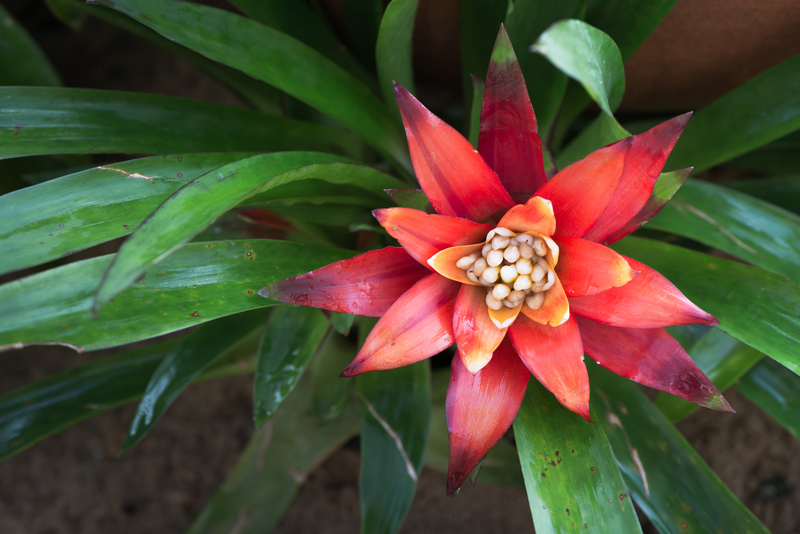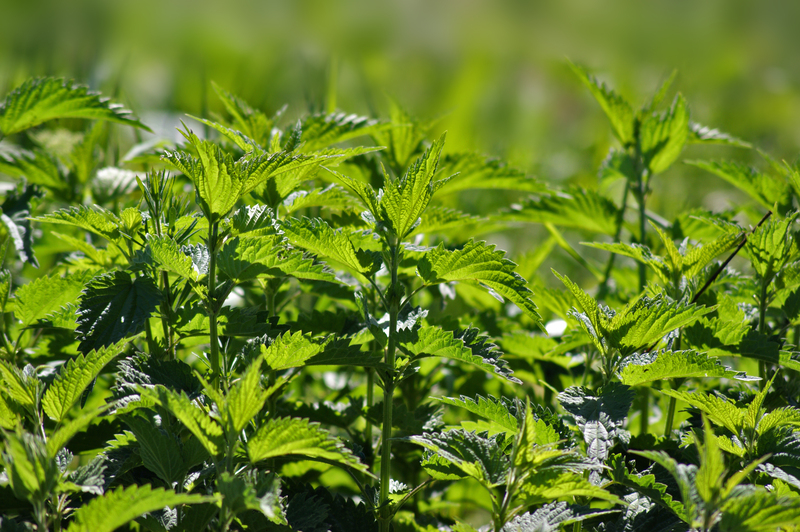Top Strategies to Protect Your Lawn from Summer Drought Stress
Summer can be especially harsh on your lawn. Scorching heat and prolonged dry spells often lead to stressed, brown, patchy grass. If you want to maintain a lush, healthy landscape during the most challenging months, it's crucial to implement effective strategies to protect your yard from drought conditions. In this comprehensive guide, we'll explore the top strategies to shield your lawn from summer drought stress--ensuring that your grass remains vibrant, resilient, and beautiful all season long.
Understanding Lawn Drought Stress
Drought stress occurs when moisture levels in the soil drop below what your grass needs to thrive, typically due to high temperatures and minimal rainfall. Symptoms include:
- Browning or yellowing grass blades
- Wilting and curling leaves
- Thinning patches
- Slow or halted growth
Preventing drought stress isn't just about watering more--it's about applying multiple smart practices that build resiliency into your lawn's ecosystem.

1. Select the Right Grass Species
Not all grasses have equal drought tolerance. Choosing the best grass type for your climate is the foundation of drought-proofing your lawn.
Best Drought-Tolerant Grasses
- Bermuda Grass: Excellent tolerance for heat and low water.
- Zoysia Grass: Forms a dense mat and resists drought stress.
- Bahiagrass: Performs well in sandy, dry soils.
- Buffalograss: Native to North American prairies, exceptionally drought-hardy.
- Tall Fescue: Deep roots make it superior among cool-season grasses.
When seeding or overseeding, select drought-resistant grass seed mixtures for maximum resilience.
2. Water Wisely and Efficiently
Over- or under-watering during a drought can both cause problems. Adopt smart irrigation strategies to conserve water and protect your lawn:
- Water Early in the Morning: This minimizes evaporation and allows deep soil penetration.
- Practice Deep, Infrequent Watering: One thorough soak (about 1 inch) per week encourages roots to grow deeper, rather than frequent shallow watering which promotes weak roots.
- Monitor Your Soil: Only water when the top 2-3 inches are dry.
- Use Sprinklers Efficiently: Position sprinklers to avoid runoff and sidewalks; consider a smart irrigation controller for automation and optimization.
Tip: Place a few empty tuna cans around your lawn while watering--when they're full, you've delivered an inch of water!
3. Mulch Grass Clippings and Maintain Lawn Height
Grass clippings act as a natural mulch layer. Mulching returns organic matter and essential moisture to the soil. Leave clippings on the lawn after mowing (as long as they're not too thick or wet) to lock in more moisture and insulate the ground from direct sun.
Additionally, never mow too short during summer. Taller grass shades the soil, keeps roots cool, and reduces evaporation. Optimal mowing height during periods of drought stress:
- Bermuda/Zoysia: 2-3 inches
- Tall Fescue: 3-4 inches
- Bluegrass/Rye: 3-3.5 inches
Raise your mower's deck at the first sign of heat or drought!
4. Aerate for Deeper Roots
Compacted soil restricts water infiltration and root development. Core aeration loosens the soil, allowing roots to grow deeper and access water stored below the surface. Aerate your lawn at least once a year, ideally in spring or fall, to maximize resilience against drought.
Why Aeration Protects Against Drought
- Improves water penetration into the soil
- Increases root mass depth and lateral spread
- Reduces runoff during abrupt summer rain
5. Improve Soil Health and Fertility
Healthy soil is your lawn's best defense against drought. Good soil retains moisture, drains efficiently, and supports vigorous root growth. Improve soil health by:
- Adding organic compost once or twice per year to increase water-holding capacity
- Testing and adjusting soil pH for optimal nutrient uptake
- Applying slow-release fertilizer in spring or early fall--avoid fertilizing in peak summer heat as it can stress the lawn further
- Using soil conditioners to enhance structure, especially in heavy clay or very sandy soils
Remember: Over-fertilization in drought amplifies stress and can burn your grass.
6. Manage Lawn Traffic and Stress
Lawns stressed by heat and drought recover more slowly from wear and tear. Reduce foot traffic and avoid heavy equipment on your yard during dry spells. If you must walk or play, alternate routes and use stepping stones where possible.
7. Use Smart Landscaping Practices
Incorporate Drought-Resistant Landscaping
- Install garden beds with native, low-water plants around the edges of your lawn
- Create mulch rings around trees and shrubs to reduce evaporation
- Consider permeable paving to improve drainage and maintain groundwater
Smaller, well-maintained lawns surrounded by drought-resistant borders are more sustainable and easier to care for during dry spells.
Employ Rainwater Harvesting and Conservation
- Set up rain barrels to capture and reuse stormwater for supplemental irrigation
- Redirect downspouts to garden beds or rain gardens to maximize water retention in your landscape
8. Time Lawn Tasks for Maximum Benefit
Adapt your annual lawn care schedule to the climatic needs of your region:
- Fertilization: Apply early in the growing season or after the worst heat subsides
- Aeration: Schedule for spring or autumn
- Overseeding: Late summer or early autumn for cool-season grasses
- Mowing: Reduce frequency and increase height during heatwaves
By timing these tasks correctly, you'll give your grass the best chance to recover and thrive.
9. Recognize and Address Dormancy
During extreme droughts, most lawns will go dormant. While dormant grass looks brown and lifeless, it's actually a survival mechanism.
- Do NOT try to revive dormant grass by overwatering or fertilizing. This can cause more harm than good.
- Maintain a minimum watering level (0.25-0.5 inch every few weeks) to sustain root viability if allowed by local restrictions
Patience is key; most established lawns bounce back with cooler temperatures and autumn rains.
10. Be Proactive Against Pests and Diseases
Drought-stressed lawns are susceptible to insect infestations and fungal issues. Monitor for signs of chinch bugs, grub worms, and fungal patches. Address issues quickly, but use chemicals sparingly as many products can worsen drought damage. Opt for eco-friendly interventions and maintain overall lawn vigor.

Frequently Asked Questions: Lawn Drought Survival
How can I tell if my lawn is drought-stressed or dead?
Drought-stressed grass will often recover after rain or irrigation, while dead grass pulls away easily and doesn't green up after watering. Focus on root health; if roots are white and flexible, the grass is alive.
Can I seed a new lawn during summer drought?
Summer is notoriously difficult for establishing new grass due to heat and water demands. Wait for milder weather in early fall or spring for seeding or sodding projects.
Are there legal restrictions on watering during drought?
Many regions impose watering bans or restrictions to conserve water during drought. Always check local guidelines before setting up irrigation.
Should I fertilize my lawn during a summer drought?
Avoid fertilizing when your grass is already stressed by heat and lack of water. Fertilize ahead of midsummer, or wait for rain and cooler temperatures to return.
Conclusion: Keep Your Lawn Alive and Thriving During Drought
Fighting summer drought stress requires more than just watering--it's about building a more resilient, eco-friendly lawn. By choosing the right grasses, improving your soil, hydrating deeply and wisely, and making smart mowing, mulching, and timing decisions, you can minimize damage and promote quicker recovery. Pay attention to local regulations and climate, and be willing to embrace a less-than-perfect lawn during the harshest weeks--nature will reward you with resilience in return.
If you implement these top strategies to protect your lawn from summer drought stress, you'll be better equipped to withstand the toughest summer and enjoy a greener, healthier yard every year.
Looking for more drought lawn care advice?
Bookmark this article and share it with neighbors and friends who are seeking to protect their lawns from summer heat and water shortages!